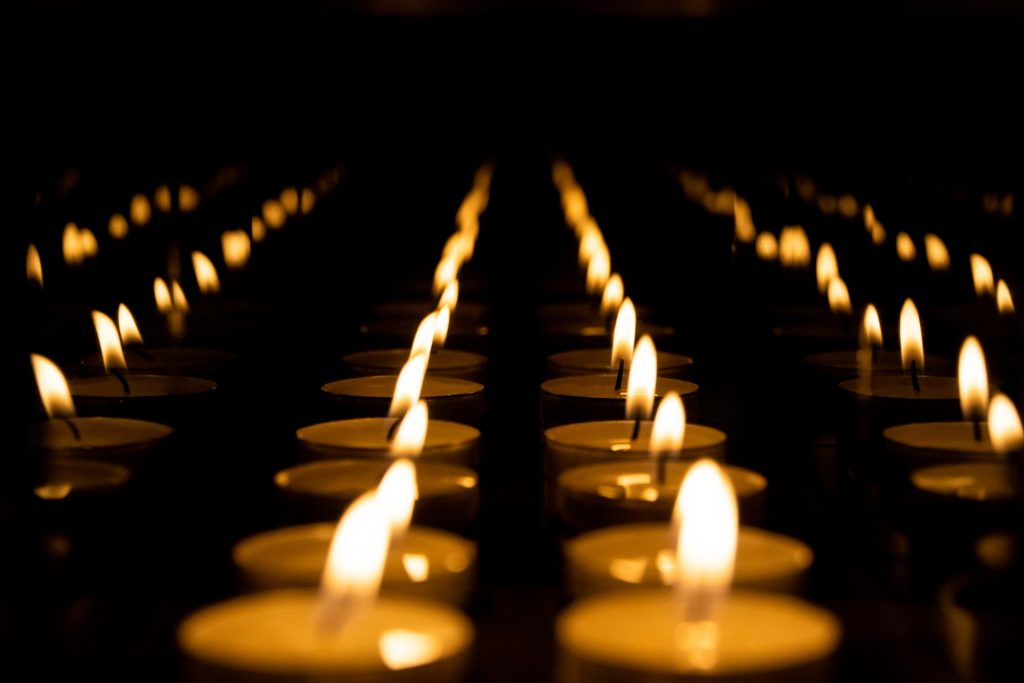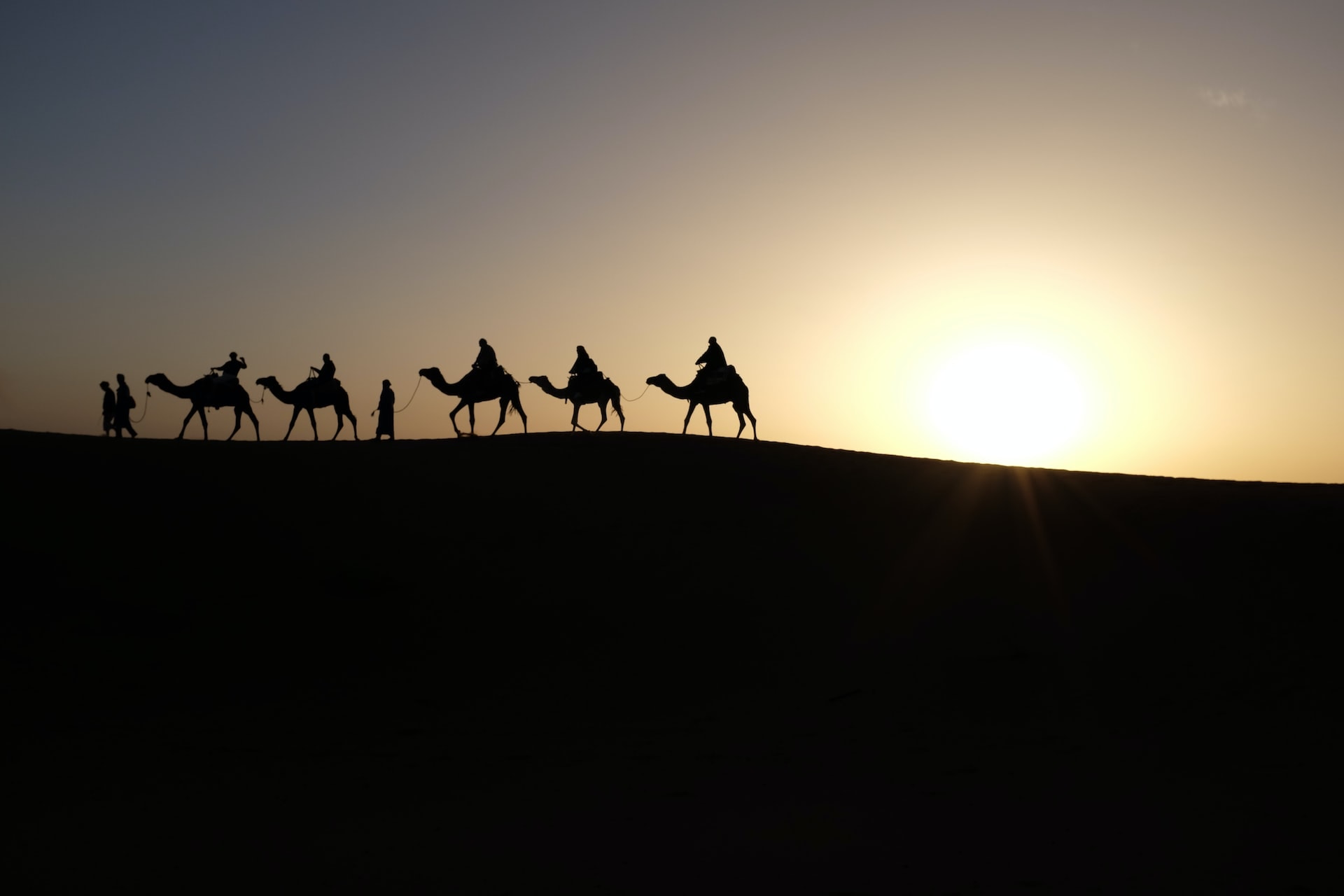A Guide to Quest of the Kings arranged by Jacob Narverud
When planning a winter concert, I like to have a good balance of traditional and contemporary, sacred and secular, challenging and quickly-learned, and upbeat and relaxed. Quest of the Kings, Jacob Narverud’s arrangement of the traditional “We Three Kings,” helps to provide some of that balance in our program.
Utilizing the traditional melody and text, but putting a new spin on the piece through varied phrasing, expression, and voicing, Jacob Narverud created a beautiful and engaging processional. Below I discuss in depth the following aspects of Quest of the Kings:
- Arranger Feature: Jacob Narverud
- Pennsylvania Roots: The Creation Story
- Tales of the Kings
- Why Processionals?
- Quest of the Kings Teacher Resources
Take a listen here before reading on!

Guide Us To Thy Perfect Light
I love a good processional in a winter concert. I like it even more if the processional surprises the audience. The lights get low, the the audience gets quiet, the tree lights sparkle, and the choir begins singing from the aisles, letting the sound envelop their audience. Arranged for TTBB with two-, three-, and four-part harmonies, Quest of the Kings will be a great processional piece for our Tenor/Bass Ensemble. With its lilting 6/8 feel, bass drum accompaniment, and gorgeous harmonies, this piece will provide a good contrast to the bright and brassy music that will be to come.
Get to Know Jacob Narverud
Composer Jacob Narverud is a widely published and programmed composer, arranger, and lyricist based in the United States. Born, raised, and educated in Kansas, Narverud began his musical journey on the French horn. Over time he added piano, choir, marching band, and wind ensembles to his rotation while also performing in musicals and opera productions.
After writing his first choral piece in 2009, Narverud created his ensemble, the Tallgrass Chamber Choir. This group of professional musicians has performed a variety of works, including many new works by contemporary composers.
Stylistically, Narverud prioritizes story and theme, setting his music to texts by great poets. You will often find chant, rubato, and word painting in his works. A few of his recent works include:
- Narverud’s attention to the text stress of William Blakes text is out of control (in a good way) in his new piece Sunflower for SATB with Cello. So pretty.
- May Wind (Set Me Free) with text by Sara Teasdale allows treble singers an opportunity to examine the power of opening and closing our hearts to love, and creating our own freedom.
- Available for two-, three-, and four-part mixed choirs as well as three and four part treble and bass ensembles, A Patch of Light with text by Robert Bode utilizes pop stylings and provides solo opportunities.
For more on Jacob Narverud, his works, and his life, visit his website, jnarverud.com.

The Creation of We Three Kings
In 1857, John Henry Hopkins, Jr. wrote the classic Christmas tune, “We Three Kings” for a Christmas pageant in Williamsport, Pennsylvania. As a music teacher, journalist, and clergyman, Hopkins had the skills to write both the lyrics and music for the carol.
Some accounts report that Hopkins wrote the piece for his nieces and nephews. Yearly, his family would dramatize the Nativity story, and “We Three Kings” was sung by the family during these performances.
Encouraged by his friends and family who were fans of the carol, Hopkins published the carol in 1862. For almost a century following, hymnal editors regarded We Three Kings as the only American contribution to the vast collection of English language carols.
So Who Are These Kings and Why Did They Travel?
“We Three Kings” recounts the story of the long journey of the magi as presented in Matthew Chapter Two, in a child-friendly manner. Composer John Henry Hopkins, Jr. encouraged performers to sing each of the verses 2, 3, and 4 as a solo, embodying the characters of King Gaspard, Melchior, and Balthazar.
In the Bible, the visitors are not called kings, but rather “wise men from the East.” It is possible these wise men were learned astrologers and priestly advisors from Persia, otherwise known as “magi.” Although the writings in the Bible do not designate a number of wise men, later tellings of the story identified the magi by name and country of origin: Gaspard/Gaspar/Caspar/Jaspar from India, Melchior from Persia, and Balthazar from Arabia. The gifts they brought held symbolic meaning regarding the life of Jesus.
Also holding great symbolic meaning is the star that the three wise men followed. Astrologers propose several explanations for this symbol. One is that the Magi interpreted a hidden meaning in the alignment of the planets (specifically Jupiter) and stars that led them to King Herod. Another is that they were following a conjunction between planets and stars. When several planets and/or stars line up, they appear to form a single super bright star.

Processionals in Winter
It seems like every winter concert starts with a processional. Why? How did this tradition begin?
Before the winter concert was a staple at nearly every school and in every community, the Christmas pageant ruled the scope of winter entertainment. For centuries (dating back to the 9th century liturgical drama), Christians have been acting out stories and sharing dramatic presentations of scripture in an effort to share Bible stories in an accessible manner.
In 1223, Saint Francis of Assisi staged the first recorded “realistic” Nativity scene with a manger in a stable. This practice was then adopted by the Dominican and Jesuit branches of the Catholic Church into still-life Nativity scenes and plays. Eventually, carols filled in the gaps between scenes and communities took the actors and scenes along the road in “procession plays.” Over time, some Christmas pageants began to include secular themes, including Santas, elves, snowmen, and reindeer.
The winter concert processional is a vestige of the larger processions associated with Christmas pageants. They might be slow, peaceful, and trodding, like Quest of the Kings, portraying a journey, or they may be upbeat and exciting, uplifting the spirits of audience immediately. Either way, they have a way of drawing audiences in to the spirit of the season.
Complimentary Pieces
Want to listen to other pieces like Quest of the Kings? Or planning a concert and need some programming ideas? Here are a few complementary pieces!
Want to be drawn in by more Winter Concert Processionals?
- If you have access to brass and organ, Personent Hodie by Lara Hoggard is an impressive way to set the stage for your winter concert.
- With a medieval feel, Holiday Processional by Brad Printz for SATB, 2-part. or 3-part Mixed, quickly engages audiences and sets the mood for merry-making through music. With partner melodies and percussion, this is sure to be a quick learn for any ensemble.
- Welcome Now, the Holiday, by Greg Gilpin is a great procession for a smaller unaccompanied ensemble with light and bouncy melodies.
Other pieces I’ve programmed with Quest of the Kings this winter season:
- Winter Sun by Don MacDonald
- We Toast the Days by Linda Kachelmeier
- Tom Gentry’s Barbershop arrangement of Jose Feliciano’s Feliz Navidad
- John Rutter’s Christmas Lullaby
- The full Winter 2022 Choir Program Roundup

I’d Love to Hear from You!
Have you sung or conducted Quest of the Kings with your choir? Did you use it as a processional? What historical connections to the creation story or story from Matthew did you draw? Let me know in the comments below!
Quest of the Kings Teacher Resources!
FREE Quest of the Kings Reading Comprehension Worksheet
Reading Comprehension Worksheets pull five key points from the blog post above and ask singers to consider the musical decisions they can make with the info from this post. Fill in the form below and get a link to a folder including the Winter 2022 Post Worksheets immediately!
Quest of the Kings Lesson Plan Bundle
Check out the Inspired Choir Shop for the Quest of the Kings Lesson Plan Bundle. This bundle includes the following five minute lesson plans, all with connections to National Standards and SEL Competencies:
- Star of Wonder Astrology Lesson
- Winter Carols History Exploration
- Processionals Listening Assignment
- Arranging 101 Project
- 6/8 Rhythms Flashcards


















